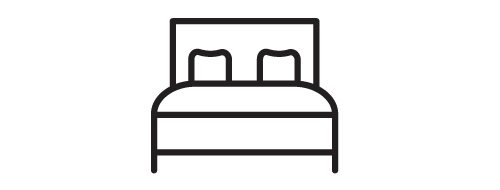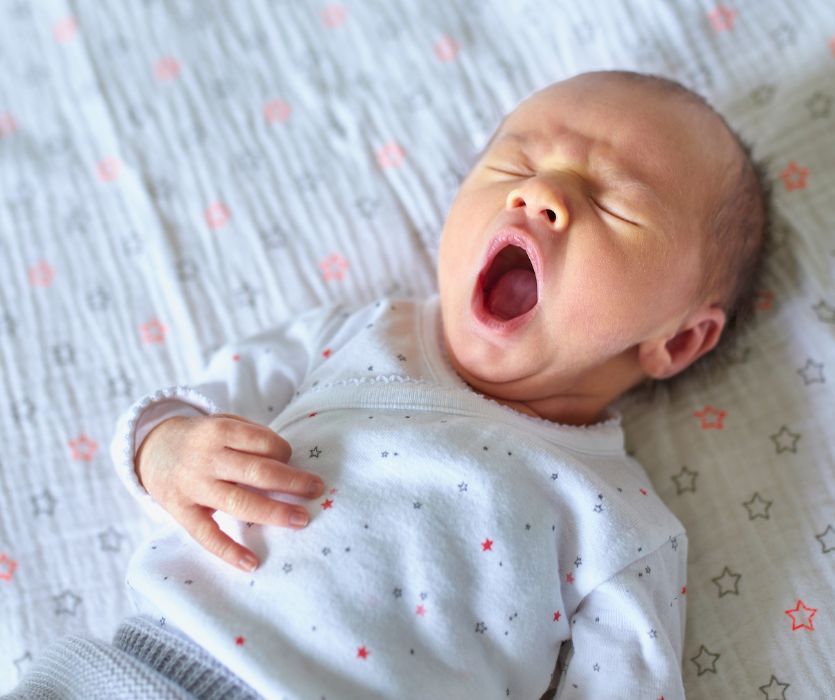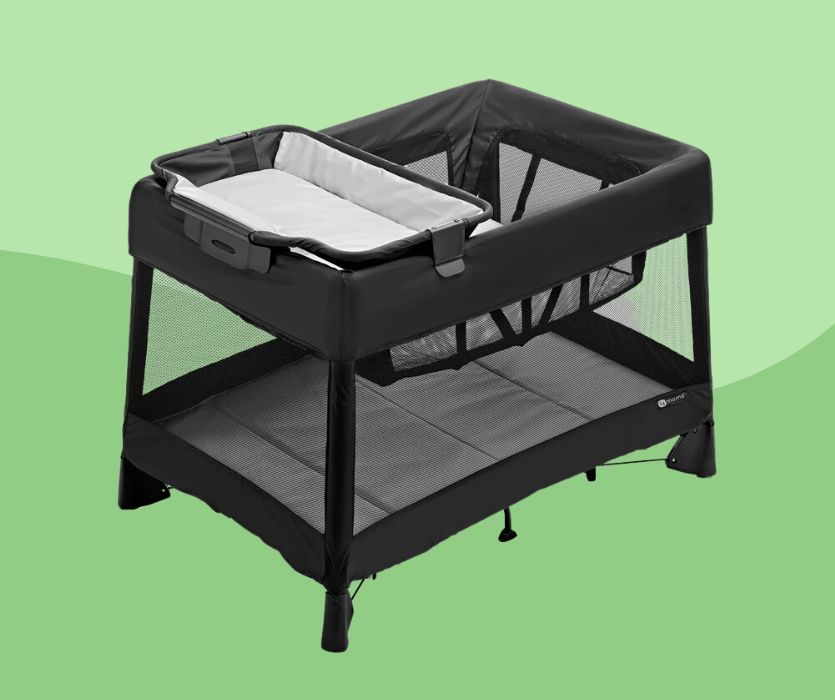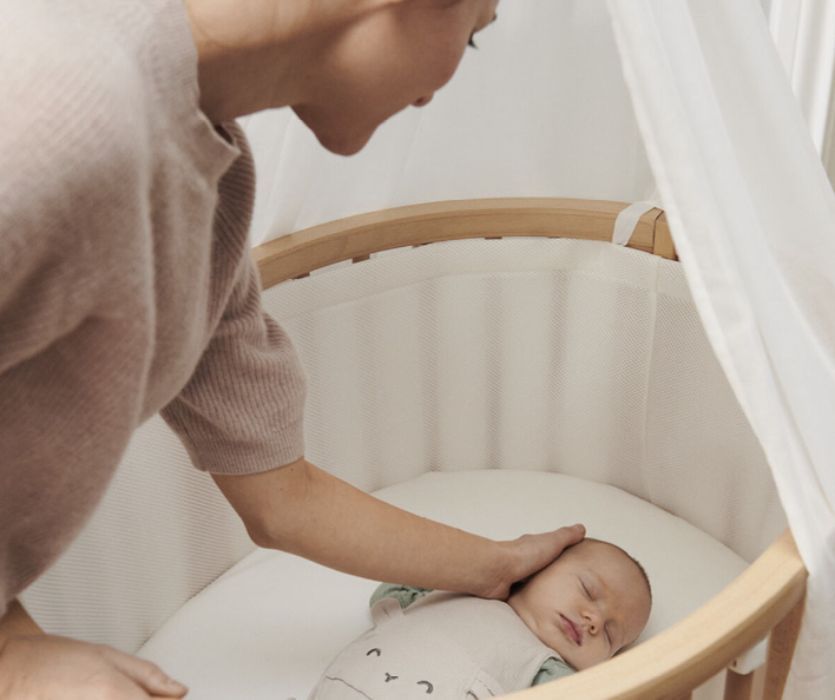The American Academy of Pediatrics (AAP) has recommendations for safe sleep. As an infant safe sleep expert at a children’s hospital, I’ve gotten a lot of questions about what the guidelines mean and how parents are supposed to apply them.
The gist is always – baby alone, always on his or her back, and in a safe sleep space like a crib, bassinet, or bassinet box. However, there are some recommendations that have parents scratching their heads.
To help, I’m breaking down the three most important guidelines. Let’s start with the most panic-inducing:

Room Sharing
AAP Recommendation: Room share—keep baby’s sleep area in the same room where you sleep for the first 6 months or, ideally, for the first year.
And parents everywhere cry into their (cold) coffee.
Upon reading this guideline, a wise friend said, “Why don’t they just give new moms a prescription for anti-depressants and the name of a divorce attorney on the way out of the hospital too??”
Yeah.
So why recommend it? The AAP wants us to do this because room sharing can reduce the risk of SIDS by as much as 50%. That’s huge. But for some (many?) families, one year just isn’t realistic. That’s ok. The key here is balance. You need to do what helps you be a sane, good parent. If that means room sharing for 4 months- then YAY! You room shared for four months!
Many parents also have practical issues with this one.
Most of us don’t have space in our bedroom for a full size crib – which is the AAPs dreamiest safe sleep space – but, a mini-crib, traditional bassinet, pack ‘n’ play, etc. will do the trick. You know what’s right for your family.

Back to Sleep
AAP Recommendation: Until their first birthday, babies should sleep on their backs at all sleep times—for naps and at night.
This one is kind of confusing because, I don’t know about your kiddos, but mine started rolling over around 10 weeks. So one year??? Mkay.
BUT, the AAP does go on to clarify that once your baby becomes comfortable rolling from back to front and front to back, you do not have to return your baby to their back.
If your kiddo can’t roll over
Put them on their back always. This is so, so important. A lot of times I tell parents to do what’s right for them. In this case, that’s not true. Back-sleeping is crucial for safety. And make sure grandparents and babysitters know, too. Grandma probably got the exact opposite advice when you were a mere babe.
If your kiddo can roll
You get a pass on this one. You don’t need to stand over them all night long anxiously turning them from belly to back. Use that time for other important stuff- like streaming your favorite show on Netflix while stuffing your face with ice cream.

Safer Bed Sharing
AAP Recommendation: They don’t recommend it but if you must, here’s how to be safer about it.
WHAT?!?!?!
I know, that’s what I said too.
Thankfully, the AAP is acknowledging that we don’t parent in a perfect world. We have to do this job in real life and for some parents that includes bed-sharing (fall asleep breastfeeding, anyone?).
I get asked ALL THE TIME about ways to safely bed share. Bad news first: There is no perfectly safe way to bed share. Now, good news: There are ways to make bed-sharing safer.
To make bed-sharing safer:
- Plan ahead. Look at your sleeping situation in the (harsh) light of day and figure out what will make it safest for baby. Try to avoid deciding to bed-share for the first time in the middle of the night when none of us have our wits about us.
- Keep your bedding to the bare minimum. Use a pillow for yourself and a blanket you will wrap around your body (keeping it away from baby). Nothing else needed.
- Only bed-share one parent at a time. If baby’s in bed, send one parent to the guest room or couch for the night. (Think of it as a vacation?)
- Sleep on a firm mattress. Nothing squishy like a couch, armchair, or waterbed (do people even have those anymore?).
- Choose bed over a couch or chair. Studies show bed-sharing is riskiest if you sleep on the sofa or in a recliner. If you think you might fall asleep while feeding your baby – feed baby in bed.
- Make bed-sharing for parents only. Bed-sharing with adults other than a parent has a higher risk of suffocation. (Why? Parents tend to be more aware of baby and sleep less deeply when baby is nearby.)
- Quit smoking if you do smoke. Being exposed to smoke raises baby’s risk of SIDS.
- Don’t take medicines or drugs that make you sleepy before you bed share.
- Avoid alcohol before bed-sharing.
Bed-sharing is most risky if:
- Your baby is less than 4 months old
- Your baby was born premature or low birth weight
- You smoked during pregnancy
- You are excessively tired (Well who isn’t? You just had a baby.)
An important note – planning ahead is key. Like many other unplanned things (pregnancy anyone? *raises hand slowly*), not planning to bed-share can lead to riskier choices – like having too much bedding, sleeping on too soft a surface, or having more than one adult in bed with baby. So, if you think you might bring baby into bed – make a plan ahead of time.
The take home point of all of this?
Do the best you can and give yourself some grace when you just can’t muster ‘the best.’
Be kind to yourselves parents – this is seriously hard work and you are doing an amazing job.
Related: Newborn Sleep: Start With This One Goal




Leave a Comment